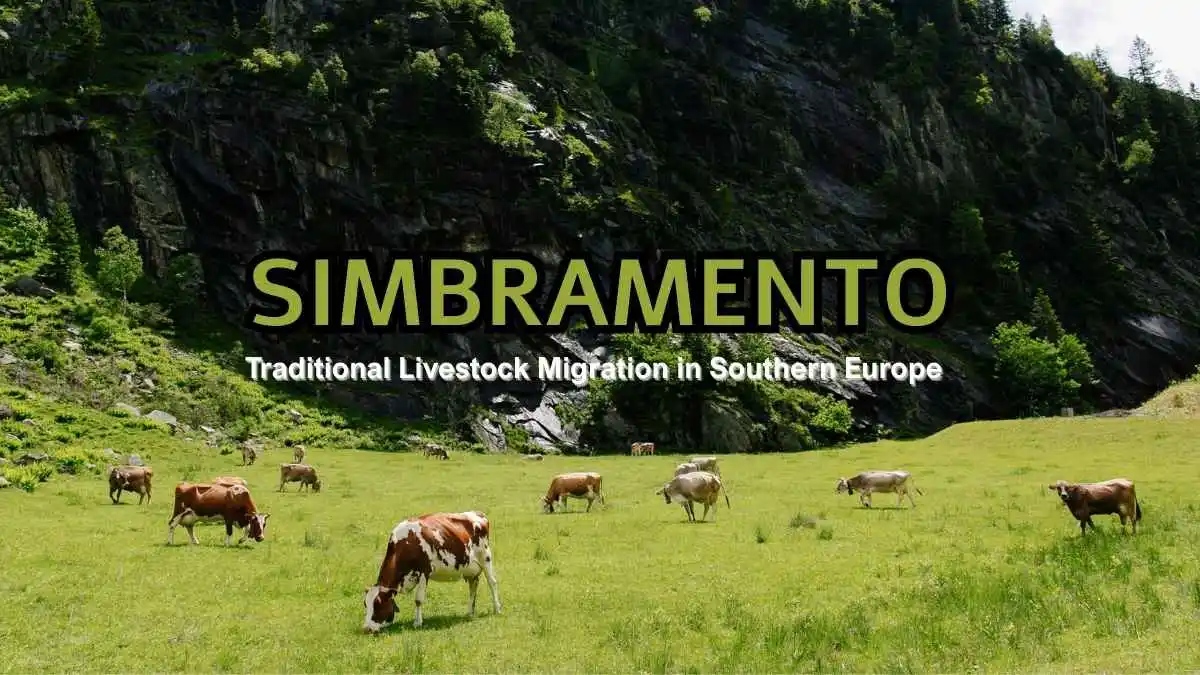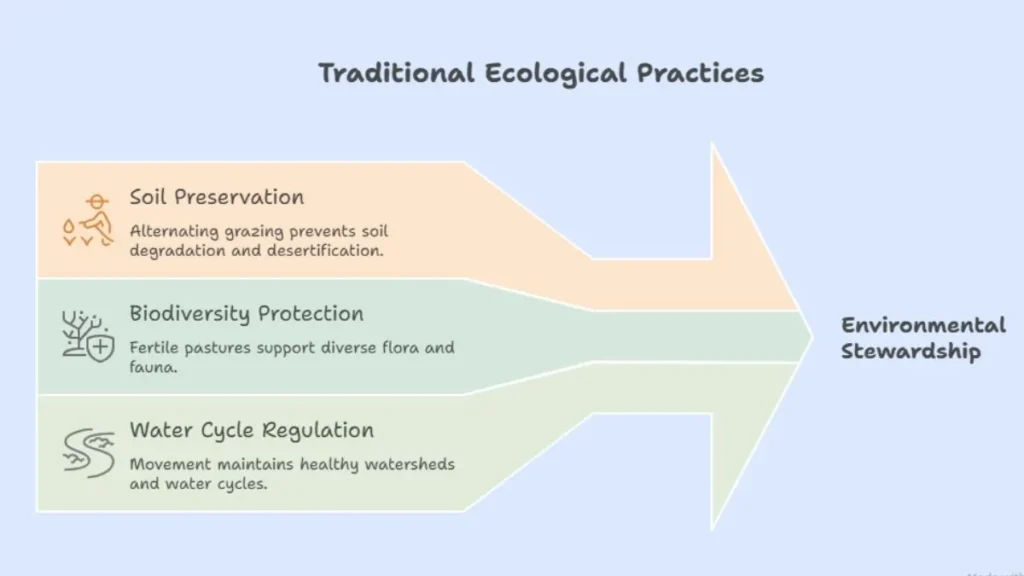BLOG
Simbramento: Traditional Livestock Migration in Southern Europe

Introduction
Simbramento, derived from pastoral traditions in southern Europe, particularly in Italy and Spain, refers to the seasonal movement of livestock from fertile lowland plains to elevated summer pastures. Taking place in spring or early summer, this practice is part of a broader transhumant system, a structured way of livestock management that harmonizes with nature’s cycles. Far beyond being an agricultural method, Transhumance represents a living cultural heritage, a bridge between ecology, tradition, and rural identity.
What is Simbramento?
Simbramento is a traditional transhumant practice in southern Europe, especially Italy and Spain, where livestock move seasonally from lowland plains to high pastures, fostering ecological balance and cultural heritage. The term Simbramento refers to the seasonal migration of herds, often sheep, goats, and cattle, from lowland plains to mountain pastures in spring or early summer. This movement was vital for:
- Preserving fertile lowlands for crop cultivation.
- Allowing livestock access to nutrient-rich highland meadows.
- Preventing overgrazing in fragile ecosystems.
Unlike permanent settlement farming, it relied on mobility, timing, and environmental awareness, ensuring that both animals and landscapes thrived year after year.
Historical Roots of Simbramento
Simbramento has roots in ancient Mediterranean civilizations. Archaeological and historical records show that Greeks and Romans practiced forms of seasonal herding to optimize agricultural production. During the Middle Ages, the practice became institutionalized:
- In Italy, regions like Abruzzo, Molise, and Lazio developed structured transhumant routes, some of which are still visible today.
- In Spain, the Mesta guild, founded in the 13th century, regulated pastoral migrations, protecting routes and pastures essential for Transhumance.
By weaving together agriculture, economy, and culture, it became a defining feature of southern European rural heritage.
Ecological Significance
It is a prime example of sustainable land management. Long before modern conservation methods, herders understood the importance of balance between humans and ecosystems.
Environmental benefits of Simbramento include:
- Soil Preservation: By alternating grazing areas, Transhumance prevented soil degradation and desertification.
- Biodiversity Protection: Highland pastures remained fertile, supporting diverse flora and fauna.
- Water Cycle Regulation: Movement across landscapes helped maintain healthy watersheds.
This traditional practice demonstrates how agrarian societies contributed to environmental stewardship without modern technology.

Simbramento in Italy
In Italy, it played a pivotal role in shaping rural economies:
- Abruzzo and Molise were renowned for their sheep herding, producing wool exported across Europe.
- The Tratturi, ancient grassy tracks, served as migration routes, some stretching over 100 kilometers.
- Pastoral villages adapted their architecture and lifestyle to seasonal movement, blending permanence with mobility.
Simbramento in Spain
Spain’s version of Transhumance is deeply tied to the Mesta organization, which managed millions of sheep. Key features included:
- Cañadas Reales: Royal cattle trails that stretched across the Iberian Peninsula.
- Merino Wool Production: It enabled Spain to dominate the global wool trade during the Middle Ages and the Renaissance.
- Legal Protections: Pastoralists enjoyed royal privileges, reflecting the high value of Simbramento in Spain’s economy.
Social and Economic Dimensions of Simbramento
Simbramento shaped rural communities by providing livelihoods and seasonal employment. Shepherds and their families depended on livestock for income, food, and trade, fostering strong community ties and shared responsibilities.
Economically, it supported local and regional markets through wool, cheese, and meat products. The movement of herds created trade networks linking highlands and lowlands, while ensuring agricultural resilience and adaptive strategies against droughts, crop failure, or market fluctuations.
Decline of Simbramento
Despite its historical importance, Transhumance began to decline in the 19th and 20th centuries due to:
- Industrialization: Mechanized farming reduced reliance on seasonal herding.
- Urbanization: Rural depopulation led to fewer pastoralists.
- Land Enclosures: Privatization restricted access to pastures and routes.
As a result, many routes and traditions faded, although remnants persist in rural areas.
Lessons from Simbramento for Modern Agriculture
Modern agricultural systems face sustainability challenges. It provides valuable lessons:
- Prioritize ecological balance over short-term gains.
- Value mobility and adaptability in farming strategies.
- Integrate cultural heritage with modern agricultural practices.
By reviving traditional wisdom, modern societies can build more resilient agricultural futures.
FAQs
Q1. Why was Simbramento important?
It ensured ecological balance, supported rural livelihoods, and enriched cultural traditions.
Q2. Is Simbramento still practiced today?
Yes, though on a smaller scale. Many regions celebrate it through festivals, eco-tourism, and heritage preservation.
Q3. How is Simbramento linked to sustainability?
By rotating grazing areas, it preserved soil fertility, supported biodiversity, and reduced overgrazing.
Conclusion
Simbramento is more than a pastoral practice, it is a living testament to human ingenuity, ecological stewardship, and cultural resilience. Rooted in the agrarian traditions of Italy and Spain, this seasonal migration of livestock symbolizes the delicate balance between humans, animals, and nature. Despite modern challenges, efforts to preserve and revitalize Transhumance demonstrate its enduring relevance as both a cultural treasure and a sustainable agricultural model.
-

 FRIENDSHIP MESSAGES1 month ago
FRIENDSHIP MESSAGES1 month ago100+ Heart Touching Sorry Messages for Friends
-

 ANNIVERSARY WISHES5 months ago
ANNIVERSARY WISHES5 months ago100+ Beautiful Engagement Anniversary Wishes Messages and Quotes
-

 BIRTHDAY WISHES5 months ago
BIRTHDAY WISHES5 months ago300+ Happy Birthday Wishes for Brother | Heart Touching Happy Birthday Brother
-

 BIRTHDAY WISHES5 months ago
BIRTHDAY WISHES5 months ago200+ Unique Birthday Wishes for Your Best Friend to Impress on Their Big Day




























